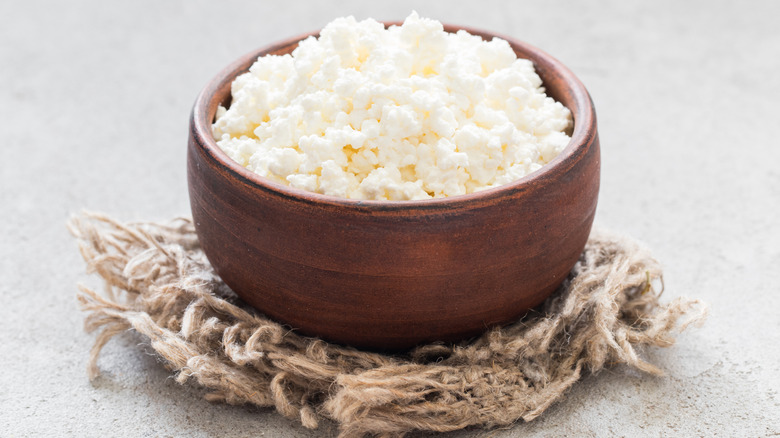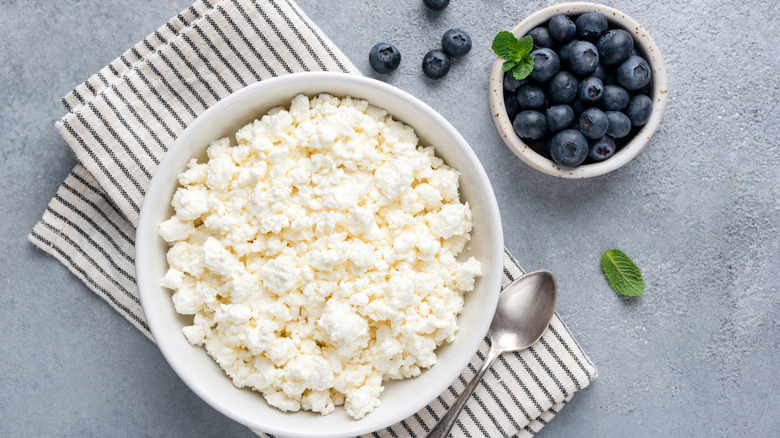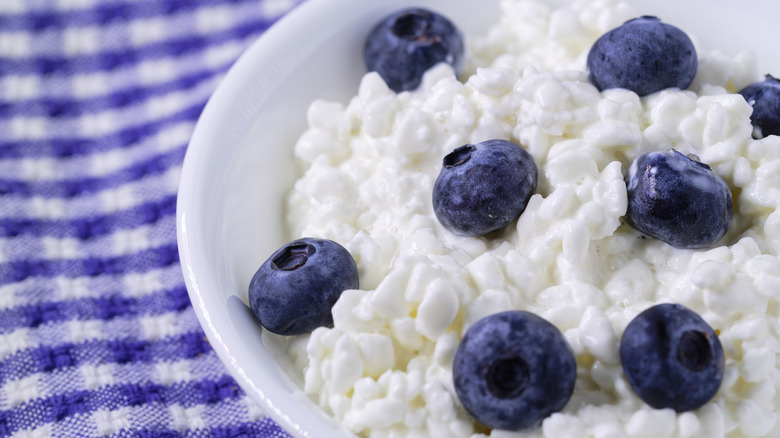Is Cottage Cheese Fermented?
Cottage cheese may not seem like a complex topic. What is there to learn about the clumpy stuff sold in a plastic bin just next to the sour cream? Well, a lot, actually. Despite its fresh, mild, and creamy taste, cottage cheese is actually quite a complex food. In recent years, cottage cheese has gotten somewhat of a cultural reevaluation, being brought into the spotlight with magazines touting its many nutritional benefits, from its high amount of protein to probiotic content.
Now you might be thinking, what probiotic content? After all, cottage cheese isn't well known for being fermented. It is distinct from, say, a kefir or Greek yogurt, which both have a tangy taste and probiotic content thanks to being fermented. There are many different brands of cottage cheese, and some are actually fermented; these are often labeled as "cultured". Now, not every cottage cheese contains live cultures. Some are made similarly to other fresh cheeses, such as mozzarella (which can be made with just two ingredients at home), using an acid to form milk curds. Both fermented and unfermented cottage cheese can be found at the grocery store, but there are some differences to keep in mind if you're looking to pick between the two.
Fermented vs. unfermented cottage cheese
So why is some cottage cheese fermented while others aren't? Essentially, it comes down to preference, as fermentation isn't a required step in making cottage cheese. Rather, cultures (bacteria) are added to develop texture and flavor, and to increase nutritional benefits. When specific strains of lactic acid bacteria are added to milk, they produce lactic acid. This acid helps separate milk solids from whey, forming the curds that are then cut into smaller pieces to make cottage cheese.
Rather than adding bacteria to produce this acid, many cottage cheese manufacturers (and those making cottage cheese at home) choose to simply add an acidic ingredient, such as lemon juice or vinegar, to separate the milk solids from the whey. Both acid and probiotic bacteria trigger the same reaction of protein separation, so choosing a method comes down to the producer's preference. While both ingredients perform the same action in cottage cheese making, the resulting cheeses are different in terms of taste and nutrition, and some prefer the fermented version for its slightly sour flavor and probiotic content.
What fermentation adds to cottage cheese
You may pick out cottage cheese based on curd size, or choose between fermented and unfermented. If you want to go for the fermented kind, make sure the label says "live and active cultures". While both styles of cottage cheese can be used interchangeably, there are some key differences to keep in mind when choosing between the two. Both are great high-protein snack options, and both generally have a fresh, creamy taste. However, fermented, or cultured, cottage cheese contains probiotics (thanks to the added bacteria), which can aid in digestion, while cottage cheeses made with acid do not.
These added bacteria don't just add a probiotic kick, either; they can also contribute to the cottage cheese's flavor. Fermented cottage cheese will have a sharper, more tangy flavor, similar to yogurt. This might be the best choice for those who tend to find the cheese a bit bland. Unfermented cottage cheese, on the other hand, is milder. So if you're not a fan of kefir or Greek yogurt, go for unfermented. However, if you're not familiar with fermented cottage cheese, you ought to give it a go at least once; it might just make you one of the many new cottage cheese converts.


